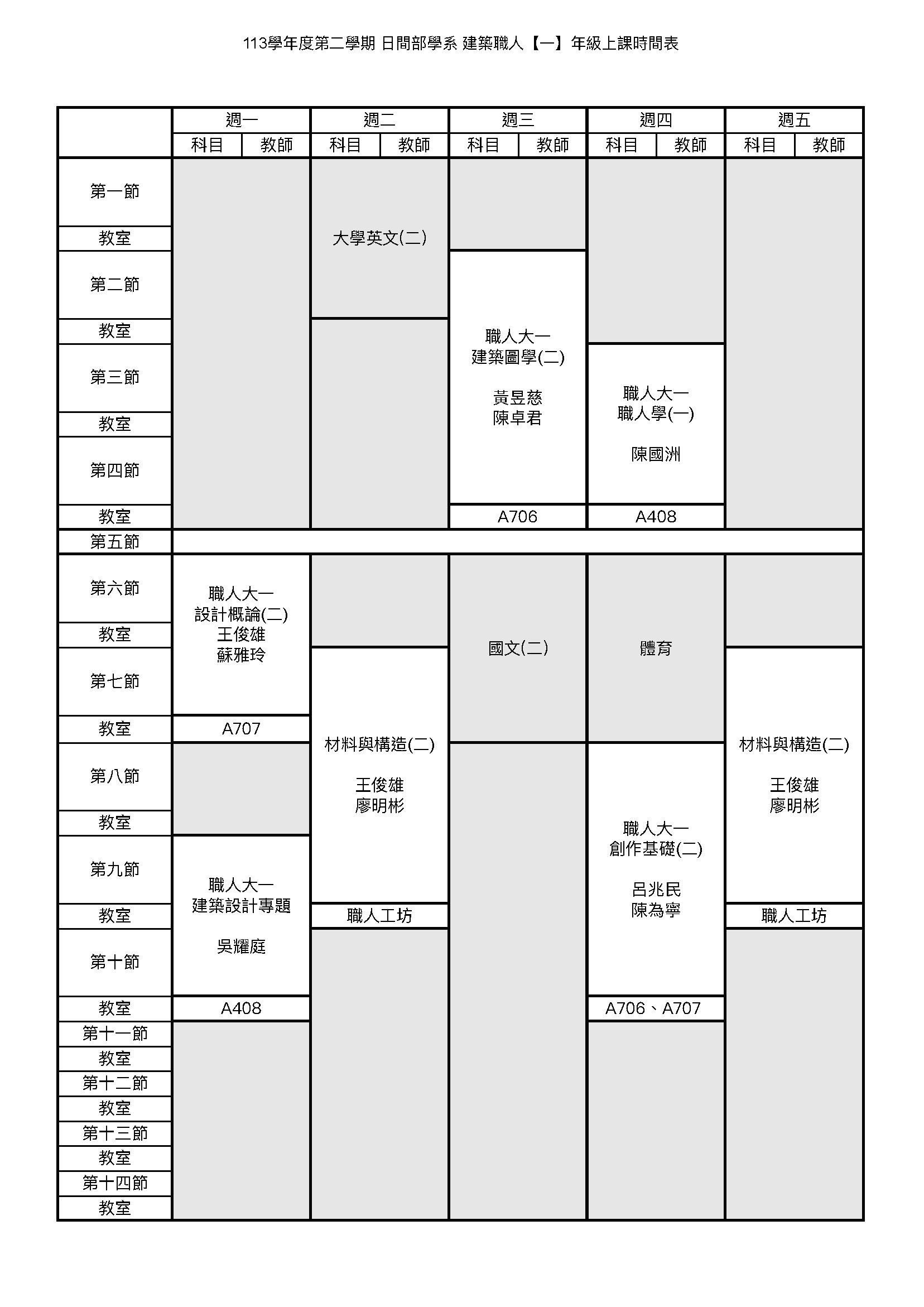Introduction to the Bachelor's Program in Architectural Craftsmanship
This program adopts a “learning by doing, doing while learning” approach to hands-on craft education. Through academia–industry collaboration, we co-develop demand-aligned curricula with partners and establish a tightly integrated internship platform between industry and school. Combined with professional certification pathways, we nurture the next generation of innovative architectural construction craftsmen.
In addition to preserving traditional building crafts that are gradually disappearing, the program integrates the aesthetic and creative education of Shih Chien University’s College of Design to cultivate craft talents who meet the needs of a new era and raise the standards of the construction industry. Our industry collaborators comprise top-tier construction companies—including FUGUACH ARCHITECTURE, PAUIAN ARCHILAND, KIMZOA CONSTRUCTION, FU TSU CONSTRUCTION , JUT, Quan-An, JUT, and MEGA FACADE CORPORATION. After the program is launched, we will invite even more companies to join.
To attract motivated learners to receive rigorous training, and with strong support from the construction sector, the program provides the following resources:
- Student grants for the first two years.
- Partner companies offer internship training and stipends.
- Industry-supported employment opportunities upon graduation to ensure job security.
With direct pathways from study to employment, students can focus on their learning without financial worries and smoothly transition into the workplace upon graduation, contributing to society and strengthening the industry.

Program Orientation & Focus
Aligned with current and future industry needs, the program is structured around the following goals and competencies:
I. Educational Objectives
-
Train entry-level practitioners who combine theory and practice in construction operations.
- Develop students' comprehensive understanding of professional practices in architectural construction.
- Equip students with the ability to independently carry out construction tasks.
- Integrate hands-on training with foundational theories in engineering and management sciences.
- Foster the ability to apply knowledge in solving practical construction problems, including independent execution, management, and maintenance.
- Guide students in obtaining relevant professional licenses and certifications.
-
Cultivate craftsmen who, on the basis of solid technical skills, pursue creativity in architectural craft.
- Develop entry-level practitioners with strong humanistic literacy.
- Strengthen students' teamwork, communication, and coordination skills.
- Nurture intrinsic motivation and professional enthusiasm.
- Instill professional ethics of serving and caring for others.
- Enhance students' awareness of innovation and aesthetics in architectural craft.
-
Develop entry-level construction practitioners with a global perspective.
- Improve students' foreign language proficiency.
- Provide curriculum content aligned with international standards.
- Offer overseas visits and exchange opportunities.
II. Core Competencies
- Ability to apply practical construction knowledge, independently execute tasks, and identify, define, and solve construction problems.
- Fundamental competence in professional construction, innovation, and aesthetics.
- Commitment to advancing architectural craft as a professional aspiration.
- Capacity to integrate across engineering fields and collaborate effectively with others.
- Oral and written communication skills and the ability to collaborate in teams.
- Understanding of professional ethics, humanities, legal frameworks, and social responsibility, combined with professional dedication.
- An international outlook in engineering practice.

Curriculum Structure
The four-year full-time curriculum integrates technical and artistic aspects of architectural construction, enabling students to bring boundless creativity to fruition. It offers in-depth, comprehensive training to balance mind, hand, and heart—building technical competence and creative spirit for future success in the creative industries. Key domains include: architecture, building construction, materials, structural mechanics, environmental systems, estimating, surveying, case studies, digital construction, workplace internship, and management.
Coursework is practice-centered and connects creativity with theory. Continuous assessment is adopted across exercises—such as projects, hands-on operations, reports, and exams—to track progress and professional standards. Through industry collaboration, students participate in internships during their studies, creating a high-quality learning experience that seamlessly bridges education and real-world practice, and helps them attain the required core competencies.

